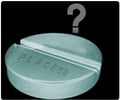- Anxiety attacks and panic attacks are distinct experiences often mistakenly used interchangeably, despite overlapping characteristics
- Anxiety attacks gradually build over time and are rooted in current circumstances, while panic attacks strike suddenly in response to perceived threats
- Panic attacks have clinical recognition in the DSM-5, whereas anxiety episodes lack formal diagnostic recognition
Biological markers for anxiety disorders, OCD and PTSD: A consensus statement. Part II: Neurochemistry, neurophysiology and neurocognition
Go to source).
When panic attacks occur regularly without an apparent cause, they are diagnosed as panic disorder. While bereavement, a family history of the condition, or neurochemical imbalances are often associated with panic attacks, their precise origins remain unknown. Interestingly, some individuals can experience panic attacks without a history of anxiety or a diagnosed anxiety disorder (2✔ ✔Trusted Source
Panic Disorder
Go to source).
Panic attacks have clinical recognition in the Diagnostic and Statistical Manual (DSM-5), whereas anxiety episodes are not officially recognized.
Panic Attacks and a Guide to Recognizing Them
The DSM-5 outlines the criteria for identifying a panic attack, requiring the presence of at least four of the following symptoms:- Racing heart
- Chest discomfort
- Shortness of breath
- Sweating
- Trembling
- Choking sensation
- Nausea
- Dizziness
- Chills or hot flashes
- Numbness or tingling in the body
- Disassociation from the environment or reality
- A pervasive sense of doom accompanied by a fear of losing control
Signs and symptoms of anxiety attacks may vary, as they are open to interpretation. Different individuals may describe having an "anxiety attack" while exhibiting diverse symptoms, making it challenging to define universally.
Experts agree that the acute symptoms of panic attacks are generally more intense than those of anxiety episodes. Panic attacks often feel like a wave of dread engulfing the individual, triggered by a perceived threat or built-up fear over time. On the other hand, panic attacks can occur at any moment, whereas anxiety attacks are often triggered by specific situations.
Avoid Telling Someone Experiencing a Panic Attack to "Not Worry"
However, it's crucial to avoid telling someone experiencing a panic attack to "not worry." Psychiatrist Dr. Ramnarine Boodoo emphasizes that such a statement can increase their anxiety levels, as it suggests stopping something they are unable to control at that moment.Using accurate terminology is essential, as it facilitates proper diagnosis and treatment. Misusing terms can hinder progress and lead individuals to doubt the seriousness of their symptoms. In a society where mental health is still often overlooked, this can be particularly challenging to cope with.
References:
- Biological markers for anxiety disorders, OCD and PTSD: A consensus statement. Part II: Neurochemistry, neurophysiology and neurocognition - (https://pubmed.ncbi.nlm.nih.gov/27419272/)
- Panic Disorder - (https://pubmed.ncbi.nlm.nih.gov/28613692/)
Source-Medindia















